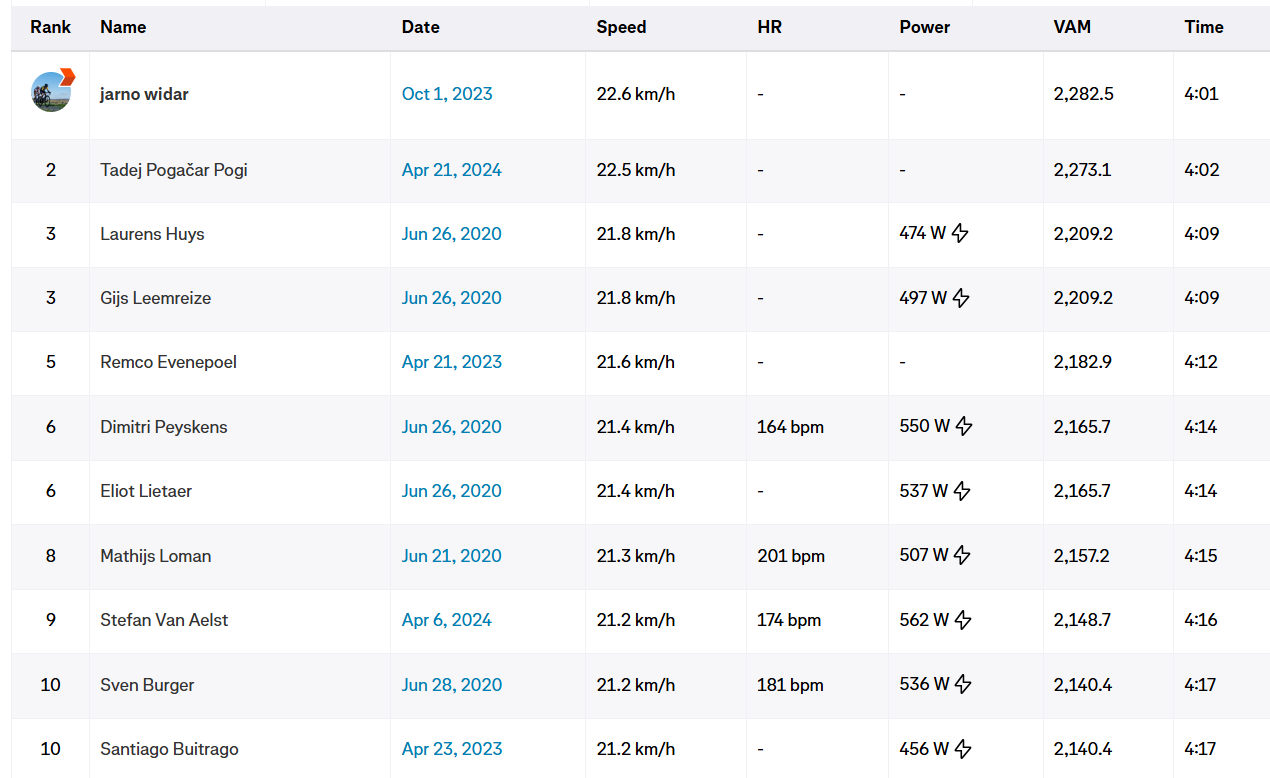Why Do Cyclists Hide Their Watts?
Plus: pro riders you can still follow for full power data
There’s a growing smokescreen culture around training data in cycling. I’ve never seen a runner hide their pace, but in cycling, it’s becoming more common. Until a few years ago most cyclists – regardless of their level – shared all their ride data including heart rate and power metrics. In 2022 we could enjoy diving into all of Mathieu van der Poel’s data of both training and races. However, he stopped doing this. Same story for great riders like Sepp Kuss and Demi Vollering. Nothing there anymore.
But why? The me it is the ultimate flex if you do show all your training data:
“Here is what I do, good luck with it. I will drop you anyway.”
Reasons for riders to hide their watts
1. Physical capabilities
This matters most for climbers, where raw watts per kilogram (W/kg) often decide race outcomes. If a rider’s power data is public, competitors can analyze their strengths and weaknesses – whether they’re better in a 5-minute VO2 max burst or a 40-minute threshold effort. That kind of insight can shape race tactics
2. Equipment
This one might be the most valid reason – especially relevant in time trials. Publishing TT power data makes it relatively easy to reverse-engineer a rider’s CdA (a measure of aerodynamic drag/how aerodynamic a bike setup is), especially on a flat, straightforward courses. This allows to compare TT setups and determine whether your competitor’s equipment is faster than yours or not. To find out why it is, is the next challenge of course.
3. Training methodology
I’m not sure if “magical” training sessions really exist, but if they do, I guess that’s a reason to hide them. Hiding your training data makes it harder for your competitors to pinpoint how you are training. Is it 40/20s, 3-5min repeats, threshold sessions or zone 2 all day every day? But still, what works for one rider might not work for another. And at the elite level, most performance staff already know what they're doing. It’s unlikely a pro team will change their training programs based on someone’s Strava.
4. (Very) sticky bottles
If one of the thousands of fans along the course hasn’t already caught it on video, power data will give it away for sure. A rider who is flying up a climb doing 0 watts is slightly suspicious. One of the most infamous examples? Arnaud Démare’s miraculous comeback on the Cipressa during Milan-San Remo 2016. He lost contact with the peloton before the Cipressa but somehow made it back before the Poggio, and went on to win.
His Strava file was deleted an hour after the race, only to be re-uploaded later with the Cipressa segment missing. Sure, Arnaud. We believe you pedaled up the whole thing yourself.
5. Doping Suspicion
At last avoiding doping suspicion could be a reason to hide power data. Riders that are putting out power that is perceived to be beyond human limits could raise a debate (rightly or not) around their legitimacy. Ironically, hiding your data can sometimes raise even more suspicion than publishing it.
Some tips to estimate power anyway
There are still a few tricks to estimate how much power your favorite riders (or competitors) are pushing during their rides.
Check the leaderboards on KOM segments and see how many watts similar were required for similar segment times (do not forget about weight differences). This works especially well on steeper segments where wind and group drafting on the particular day have little effects.
Use the calories burned. Many riders hide power but forget to hide calories. Calories burned are 1-on-1 related to power output. Just be sure that the rider used a power meter, otherwise Strava will show a calorie estimate that is not backed by actual power data.
Some quick math to estimate average power:
Energy (in joules) = power (in watts) multiplied by time (in seconds):1 joule = 0.239 kilocalories, and the human body is about 25% efficient on the bike. Put it all together, and you get this handy formula:
\(Average \space power =0.956 \frac{calories \space burned }{ hours \space ridden × 3.6 }\)Use power calculation tools. If you want to get really nerdy you can use online power calculation tools and input the segment parameters to reverse-engineer the power output that was needed to complete a segment within certain time. Also very useful for your next KOM attack! The tool from climbapedia.org is a nice one. Plugging in the data from la Redoute shows that Pogačar pushed around 8 w/kg for 4min to take the KOM. Not bad.
Who to follow?
Luckily, not all pros hide their data. There are still heroes out there who publish everything they do! Here are a few riders – men and women – who still share their rides including all the metrics:
Derek Gee (Israel-Premier Tech)
Fillipo Zana (Team Jayco AlUla)
Connor Swift (Ineos Grenadiers)
Paul Magnier (Soudal Quick-Step)
Warren Barguil (Team Picnic PostNL)
Puck Pieterse (Fenix Deceuninck)
Lucinda Brand (Lidl Trek)
Chloe Dygert (CANYON//SRAM zondacrypto)





I use sauce for Strava to get an idea of how hard is it going to be on my next race’s main climb! Those tools are sometimes really helpful.